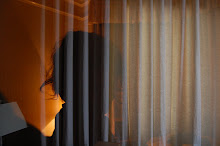




Annabel Fraser
No Place (part 1)
The No Place books (2007) question whether narrative is essential to create a space that carries meaning. It is based on written observations of a street in London and aims to be as objective as possible. The works use the depth of the book to build up an ever-expanding picture of the space through words. The deliberate absence of narrative encourages the reader to naturally seek one out.

